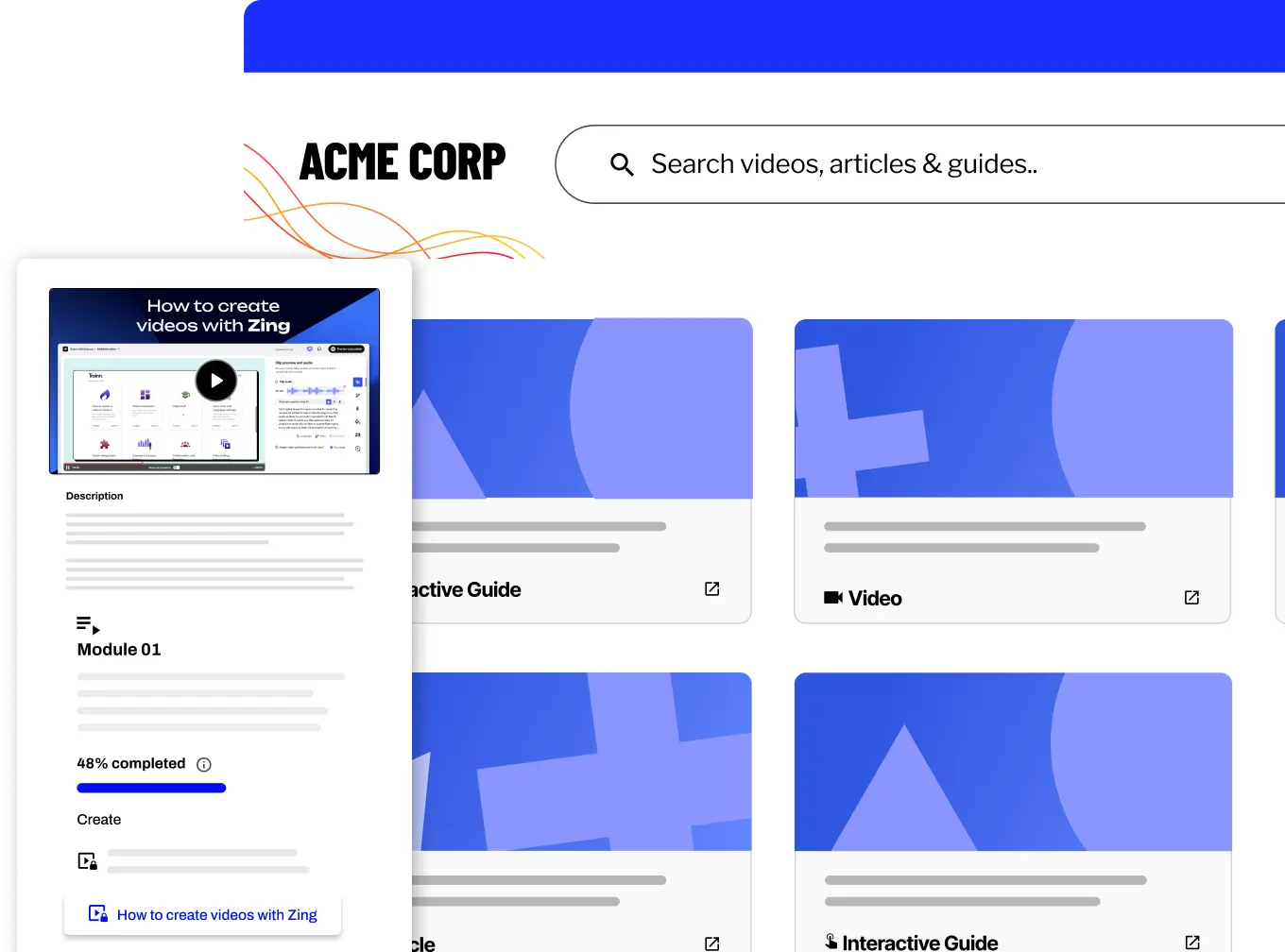- Features
- Resources
- Pricing
AI-Powered Customer Education Platform
Meet Trainn: One platform to create training videos & interactive guides, a customizable Knowledge Base, and a Training Academy.
Free for 14-days. No credit card required.
Further reads
Gamification
What is Gamification?
Gamification is the process of incorporating game-like elements and mechanics into non-game contexts, such as learning and training programs. It involves the use of techniques and strategies derived from games to make tasks or activities more engaging, motivating, and enjoyable. By introducing elements like points, badges, leaderboards, challenges, and rewards, gamification aims to tap into the natural human desire for competition, achievement, and recognition.
What are the Key Benefits of Gamification?
- Increased Motivation and Engagement: Gamified learning experiences foster a sense of fun and excitement, capturing learners' attention and encouraging them to actively participate and persist through challenging material.
- Improved Knowledge Retention: The interactive and immersive nature of gamified learning environments promotes deeper cognitive processing and reinforces the retention of information and skills.
- Personalized Learning Experiences: Gamification elements can adapt to individual learners' progress, providing personalized challenges and tailored learning paths based on their performance and preferences.
- Enhanced Collaboration and Social Learning: Many gamification strategies incorporate social elements, such as leaderboards and team challenges, fostering a sense of community and encouraging peer-to-peer learning and support.
- Measurable Progress and Feedback: Gamification often includes metrics and progress tracking, allowing learners to visualize their achievements and receive timely feedback on their performance.
What are the Types of Gamification?
- Points and Badges: Awarding points or badges for completing specific tasks, reaching milestones, or demonstrating mastery of certain skills.
- Leaderboards and Competitions: Creating leaderboards that rank learners based on their achievements, fosters a sense of friendly competition and motivation.
- Storytelling and Narratives: Incorporating storytelling elements and narratives into the learning experience, making it more immersive and engaging.
- Challenges and Quests: Presenting learners with challenges or quests that require them to apply their knowledge and skills to progress through the learning material.
- Levels and Progression: Structuring the learning experience into levels or stages, with each level presenting new challenges and rewards to maintain learner motivation and a sense of accomplishment.
Why is Gamification Important in Customer Education?
- Enhancing Product Knowledge Retention: By making the micro learning process more engaging and interactive, gamification can help customers better retain product information, features, and best practices.
- Promoting Continuous Learning: Gamified learning experiences can encourage customers to continuously seek out new knowledge and skills, keeping them up-to-date with product updates and industry trends.
- Increase Course Completion Rate: By tapping into customers' intrinsic motivation and desire for achievement, gamification will increase course completion rates and overall engagement with customer education programs.
- Fostering Customer Loyalty: Gamified learning experiences can create a sense of community and connection between customers and the organization, fostering long-term loyalty and advocacy.
What are Some Best Practices for Implementing Gamification Effectively?
- Align with Learning Objectives: Ensure that the gamification elements integrated into the learning experience directly support and reinforce the defined learning objectives and desired outcomes.
- Balance Challenge and Achievability: Carefully calibrate the difficulty level of challenges and quests to strike a balance between being achievable and providing a sense of accomplishment.
- Provide Meaningful Rewards and Recognition: Offer rewards and recognition that resonate with learners, such as badges, certificates, or even tangible prizes, to reinforce positive behaviors and motivation.
- Foster Social Interaction and Collaboration: Incorporate social elements and collaborative challenges to encourage peer-to-peer learning, knowledge sharing, and a sense of community.
- Continuously Monitor and Adapt: Regularly gather feedback from learners, analyze engagement data, and make adjustments to the gamification strategy based on what resonates most with the target audience.
What Tools or Technologies are Commonly Used in Gamification?
- Learning Management Systems (LMS): Platforms like Trainn often include built-in gamification features, such as badges, leaderboards, and progress tracking, enabling the integration of gamified elements into online courses and training programs.
- Gamification Platforms and Tools: Dedicated gamification solutions, like Badgeville and Bunchball, offer a wide range of gamification mechanics and analytics capabilities.
- Game Development Tools: Platforms like Unity and Unreal Engine can be leveraged to create immersive, game-like learning experiences and simulations.
- Mobile Apps: Gamified learning experiences can be delivered through mobile apps, leveraging features like push notifications, location-based challenges, and real-time progress tracking.
- Analytics and Reporting Tools: Tools like Trainn, that provide insights into learner engagement, progress, and achievement data, enable organizations to measure the effectiveness of their gamification strategies.
What are the Challenges of Gamification?
- Maintaining Long-Term Engagement: Sustaining learner interest and motivation over time can be challenging, requiring continuous innovation and adaptation of gamification strategies.
- Balancing Gamification and Learning Objectives: It is crucial to balance gamification and learning objectives to ensure that gamification does not overshadow learning objectives.
- Personalization and Inclusivity: Different learners may have varying preferences and motivations, making it essential to provide personalized gamification experiences and account for diverse learning styles.
- Resource Requirements: Implementing effective gamification strategies often requires significant upfront investment in terms of design, development, and ongoing maintenance.
- Data Privacy and Security: Collecting and managing learner data for gamification purposes must be done in compliance with data privacy regulations and best practices.
Trainn is the only AI-powered and no-code LMS that helps SaaS businesses build an enterprise-grade Academy to drive customer training and product education at scale. Using Trainn, you can author course content, build courses with quizzes, and launch your Academy with certifications and LMS analytics.
FAQs
1. Can gamification effectively teach complex technical skills?
Yes, gamification effectively teaches complex technical skills through scenario-based challenges and simulations.
2. How can organizations measure gamification's impact?
Organizations measure gamification's impact using learner-level analytics and gathering learner feedback.
3. Is gamification suitable for all learning audiences?
Personalized gamification and inclusive design ensure suitability for all learning audiences.





